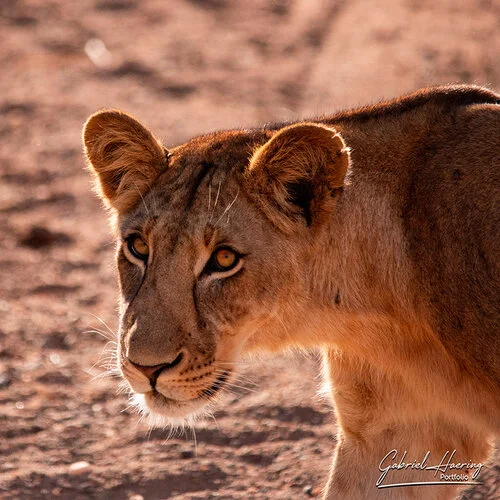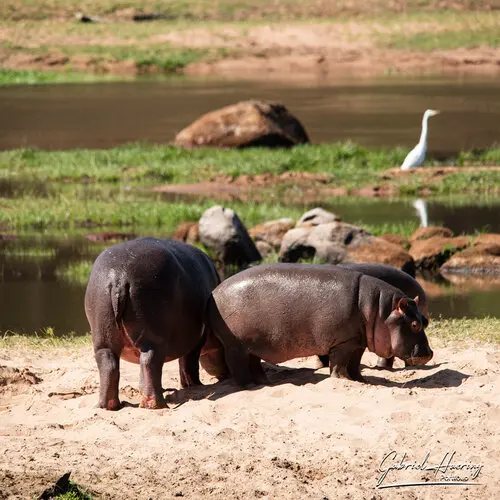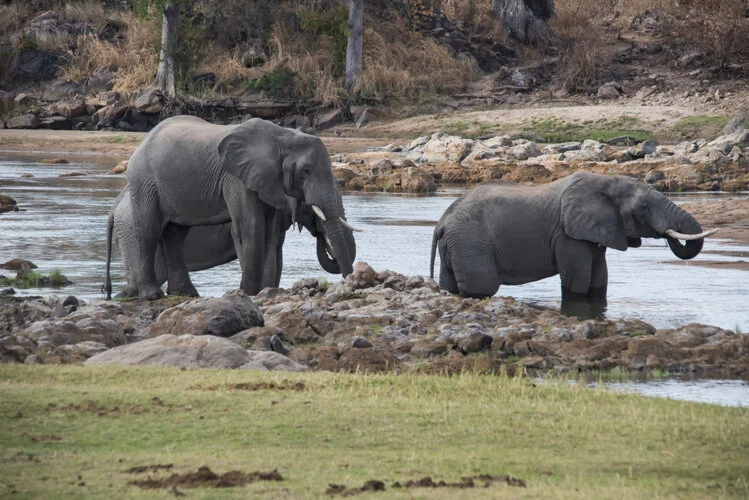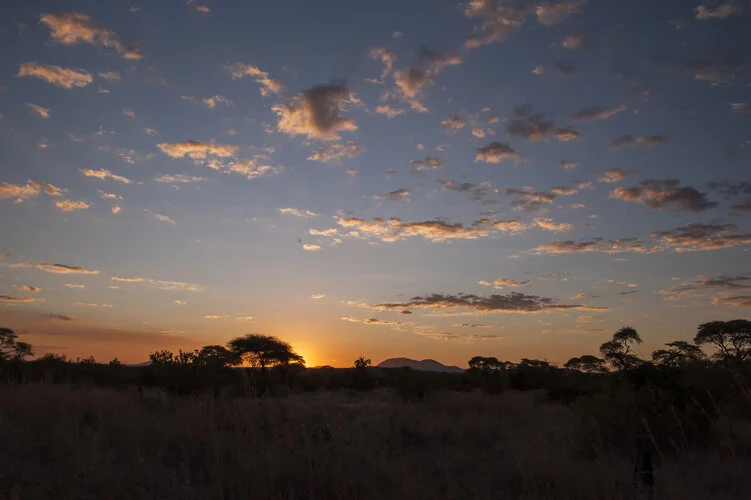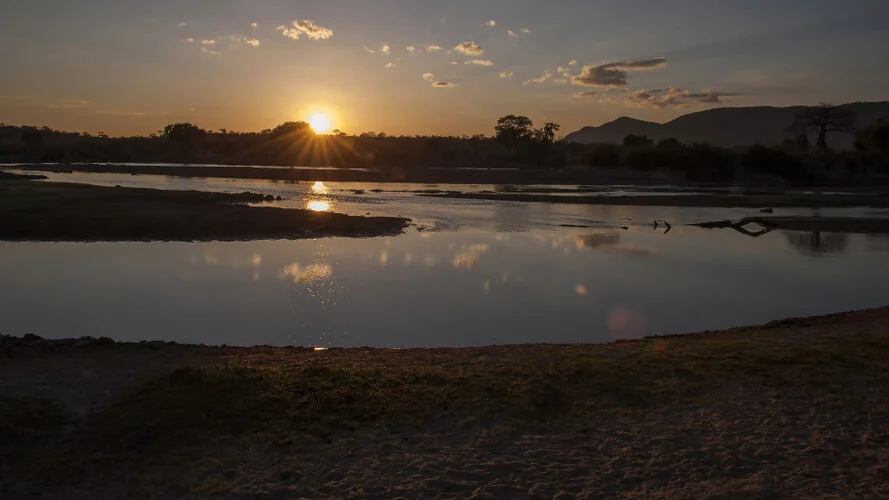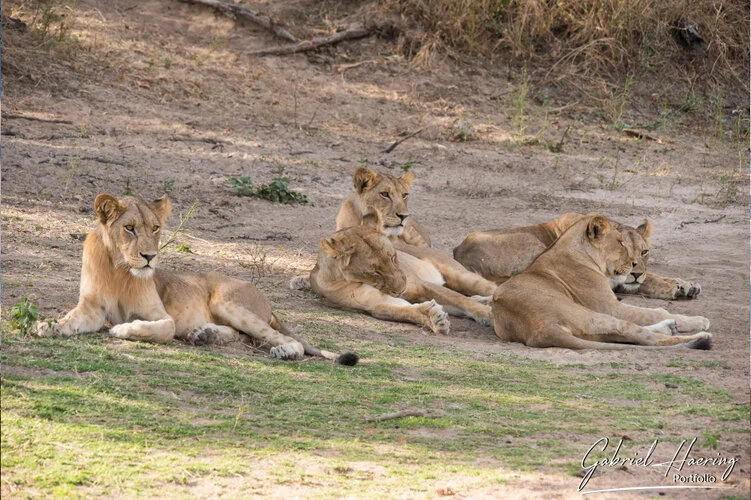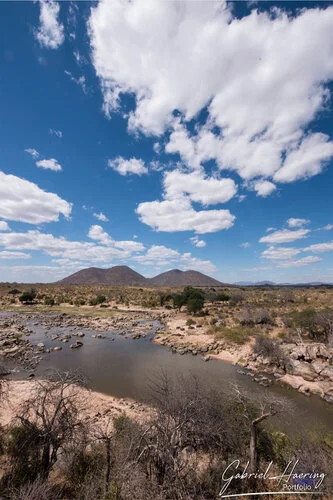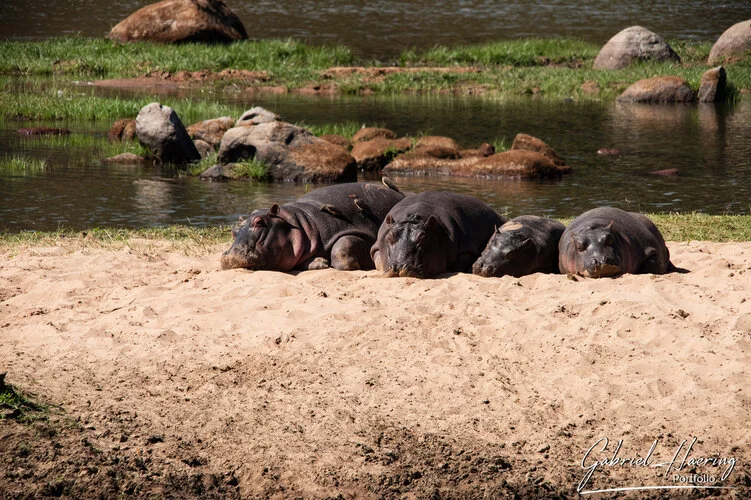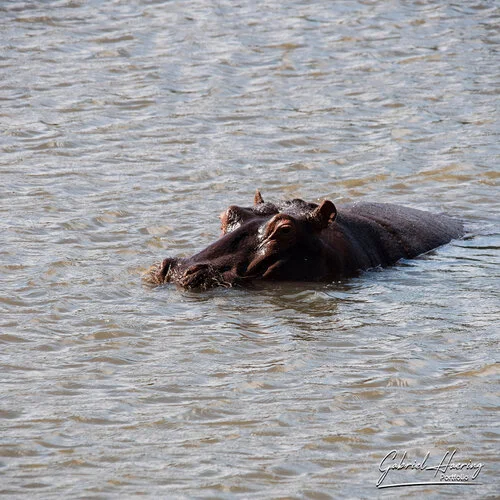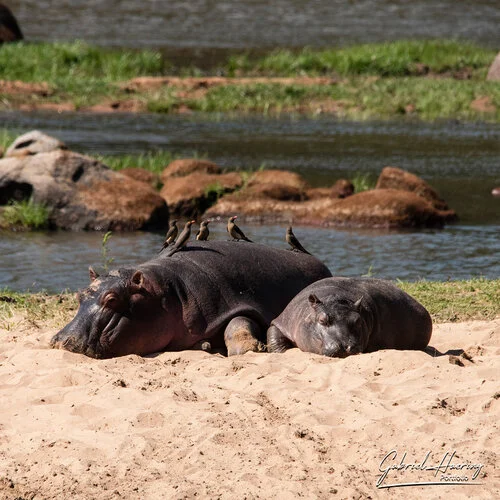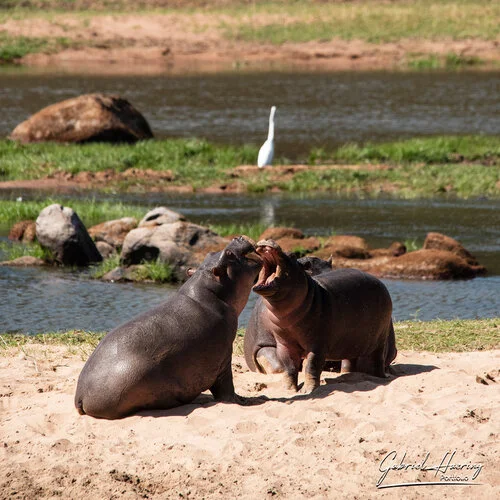Photographic Safari Ruaha Photo Portfolio by Gabriel Haering
Menu 2 > Portfolio
Ruaha National Park
What about Ruaha National Park? One of my favorite parkTanzania national parks, along with Tarangire.
In the heart of Tanzania, Ruaha National Park reveals itself as an unparalleled destination for photography safari enthusiasts in search of an authentic and wild experience.
Its varied landscape, from arid savannas to the lush banks of the Ruaha River, offers spectacular scenes we can't wait to capture. Ruaha is famous for its vast populations of elephants, the imposing herds of buffalo, and the magnificent congregations of lions, which dominate the territory with an aura of majesty. The incredible diversity of habitats hosts an extraordinary variety of birds, with over 570 species, turning this park into a paradise for the ornithologists among us.
During the photographic safari in Ruaha, we will have the opportunity to explore vast territories in relative solitude, getting closer to wildlife in moments of pure naturalness, far from the tourist masses of other more famous parks. Walking tours and vehicle safaris will offer us a unique chance to venture deep into the wild heart of the park, where the magic of nature reveals itself at every corner.
The golden light of dawn and sunset provides perfect moments for photography, illuminating the landscapes with warm tones and creating breathtaking contrasts that highlight the raw beauty of Africa. Whether it's capturing the epic clash between predators and prey, the delicate beauty of a desert flower, or the grand solitude of the baobab trees dominating the horizon, Ruaha offers an unforgettable experience that captures the very essence of wild Africa.
Its pristine atmosphere and abundance of photographic moments make it a must-visit destination for those of us who wish to fully immerse ourselves in nature and wildlife photography.

With Photographer
Dar Es Salaam - Nyerere - Ruaha - Dar Es Salaam.
Prices are intended Per Person. Basis is 4 participants.
In the quantity indicate the number of people you would like to request the formal quotation.
Don't worry about clicking "Buy". This is a pre-reservation to be confirmed and not a formal order.
Prices are intended Per Person. Basis is 4 participants.
In the quantity indicate the number of people you would like to request the formal quotation.
Don't worry about clicking "Buy". This is a pre-reservation to be confirmed and not a formal order.
Price without discount5,280 $
About Ruaha National Park
Ruaha National Park, located in southern Tanzania, is one of the country’s most impressive yet least visited wildlife destinations. Covering approximately 20,226 square kilometers, it is the largest national park in Tanzania, known for its stunning landscapes, diverse wildlife, and remote, untouched wilderness. Established in 1910 as part of the Saba Game Reserve, Ruaha became a national park in 1964.
What sets Ruaha apart from other parks is its unique blend of ecosystems. The park lies in a transitional zone where East Africa’s savanna meets southern African miombo woodlands, creating a rich tapestry of habitats. Ruaha is home to over 570 bird species, making it a paradise for birdwatchers. It also boasts one of Africa's largest populations of elephants and is known for its healthy populations of lions, leopards, and cheetahs. Additionally, the park supports rarer species such as the endangered African wild dog and the majestic sable antelope.
Seasonal Changes and Wildlife Patterns
Ruaha National Park experiences distinct wet and dry seasons, each influencing wildlife behavior and visibility. The dry season, which runs from June to October, is the best time for game viewing. During this time, the Great Ruaha River, which runs through the park, becomes a vital water source, attracting large herds of animals. Elephants, giraffes, zebras, and impalas congregate along the riverbanks, while predators like lions and leopards patrol the area in search of prey. As the water sources dry up, the dense vegetation thins out, making it easier to spot wildlife.
The wet season, from November to May, transforms the park into a lush, green landscape. The rains fill the rivers and create temporary waterholes, leading to an abundance of food and water for the park’s wildlife. While the thick vegetation can make wildlife more challenging to spot, the wet season is an excellent time to witness migratory birds and newborn animals. The green season also brings the park’s landscape to life, with blooming wildflowers and dramatic skies that create stunning backdrops for photography.
Tips for Photographers Visiting Ruaha National Park
Ruaha National Park offers unique opportunities for wildlife and landscape photography. Here are a few tips for photographers to make the most of their visit:
- Focus on the River: The Great Ruaha River is the lifeline of the park, especially during the dry season. Many animals congregate around the river, making it an ideal spot to capture wildlife interactions, particularly elephants drinking or predators lurking nearby.
- Golden Hours for Best Light: The soft light at sunrise and sunset is perfect for photography. The golden hues during these times add warmth to your images and highlight the natural beauty of both the wildlife and landscapes.
- Bring a Telephoto Lens: To capture Ruaha’s diverse wildlife, a telephoto lens (400mm or more) is essential. This allows you to photograph animals like leopards and wild dogs from a distance without disturbing them.
- Landscape Opportunities: Ruaha’s varied landscapes, from baobab-dotted plains to rocky outcrops, offer excellent opportunities for landscape photography. A wide-angle lens will help you capture the expansive scenery.
- Prepare for the Elements: The park’s remote location means limited facilities, so be prepared with extra batteries, memory cards, and protective gear for your camera, especially during the rainy season.
What is Special About a Private Photographic Safari?
A Private Photographic Safari in Ruaha National Park offers a tailored, exclusive experience for photography enthusiasts. One of the standout features of a private safari is the flexibility it provides. Unlike group safaris, where you must adhere to a fixed schedule, a private safari allows you to customize your itinerary to your preferences, spending as much time as needed at each location to capture the perfect shot.
Endelevu Tours, renowned for their expertise in offering personalized safaris, provides specialized vehicles designed for photographers. These vehicles are equipped with open sides and roof hatches, allowing unobstructed views and flexibility in positioning for the best photographic angles.
Moreover, Endelevu’s expert guides are knowledgeable in both wildlife behavior and photography, ensuring that you’re in the right place at the right time. Whether it's tracking a pride of lions at dawn or positioning yourself for a stunning sunset over the Great Ruaha River, Endelevu’s private safaris are designed to maximize your photographic potential. In addition, the company is committed to eco-friendly tourism, ensuring that your safari not only delivers an unforgettable experience but also contributes to the conservation of Ruaha’s unique ecosystems and wildlife.



